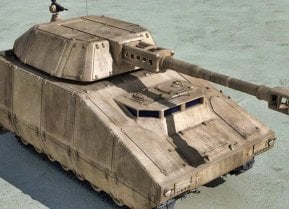Watch Out China: New U.S. Navy Plan Calls for 66 Nuclear-Attack Submarines
A significant impetus for the U.S. Navy is geopolitical competition with China, which maintains six nuclear-powered and forty-six diesel-powered attack submarines.
The U.S. Navy’s requests for submarines have for many years exceeded the service’s inventory, particularly in the Pacific.
However, the U.S. Navy, Congress, and industry partners are accelerating an effort to add more attack submarines in the coming years and help offset an anticipated deficit resulting from the retirement of more Los Angeles-class submarines. Previous publications of the U.S. Navy’s thirty-year Shipbuilding Plan have indicated a substantial decrease in submarine replacements but there has been an intense joint effort by the U.S. Navy and Congress effort to increase Virginia-class submarine production and aim for building two or three per year.

A significant impetus for the U.S. Navy is geopolitical competition with China, which maintains six nuclear-powered and forty-six diesel-powered attack submarines.
This is likely why the Chief of Naval Operations, Adm. Michael Gilday, calls for an attack submarine capacity at sixty-six in the Navigation Plan 2022. This many attack submarines, when supplemented by twelve Columbia-class, nuclear-armed ballistic missile submarines, would bring the U.S. Navy’s entire fleet size up to seventy-eight submarines.
The plan calls for sixty-six nuclear-powered fast-attack and large payload submarines “to hold adversaries at risk in both contested seas and open oceans.” The Navigation Plan states that “We will continue to build the Virginia-class at a sustainable rate while developing the SSN(X).”
However, a time frame is not given although there are many key variables to consider beyond the number of submarines. Virginia-class attack submarines, which are now being built and added to the fleet more quickly, incorporate a number of new technologies. Some of these submarines, particularly Block III models and above, operate with a new generation of quieting technologies, coating, and communications equipment to ensure improved undersea connectivity and stealth properties to avoid detection. Virginia-class submarines are also capable of performing surveillance missions due to a Large Aperture Bow sonar system and an ability to launch surveillance drones from the missile tubes. The submarines operate with fiber-optic cables and a digital “fly-by-wire” navigation system to set depth and speed.
The Virginia-class submarines are also introducing a paradigm-changing measure of firepower, as the Block V model has an eighty-foot-long Virginia Payload Module that increases the number of Tomahawk missiles it can carry from twelve to forty.
While little is known about the specific technologies woven into Chinese submarines, the Chinese Navy may not be able to match the performance parameters, sensing, and firepower built into Virginia-class submarines. Nonetheless, media reports indicate that China’s new Type 039C attack submarine likely carries similar advanced technology.
About the Author
Kris Osborn is the defense editor for the National Interest. Osborn previously served at the Pentagon as a Highly Qualified Expert with the Office of the Assistant Secretary of the Army—Acquisition, Logistics & Technology. Osborn has also worked as an anchor and on-air military specialist at national TV networks. He has appeared as a guest military expert on Fox News, MSNBC, The Military Channel, and The History Channel. He also has a Master’s Degree in Comparative Literature from Columbia University.


